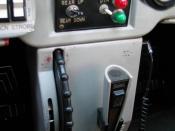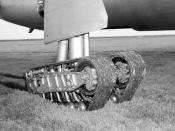- To lengthy...
One of the first things that is likely to be noticed
during a visit to the local airport is the wide variety of
airplane styles and designs. Although, at first glance, it
may be seen that airplanes look quite different from one
another, in the long run their major components are quite
similar. These similarities lie in the fuselage, wing,
empennage, landing gear, and powerplant. The four forces of
flight which all planes have in common are lift, weight,
thrust, and drag.
The fuselage serves several functions. Besides being a
common attachment point for the other major components, it
houses the cabin, or cockpit, which contains seats for the
occupants and the controls for the airplane. The fuselage
usually has a small baggage compartment and may include
additional seats for passengers.
When air flows around the wings of an airplane, it
generates a force called 'lift' that helps the airplane fly.
Wings are contoured to take maximum advantage of this force.
Wings may be attached at the top, middle, or lower portion of
the fuselage. These designs are referred to as high-, mid-,
and low-wing, respectively. The number of wings can also
vary. Airplanes with a single set of wings are referred to
as monoplanes, while those with two sets are called biplanes.
To help fly the airplane, the wings have two types of
control surfaces attached to the rear, or trailing, edges.
They are referred to as ailerons and flaps. Ailerons extend
from about the midpoint of each wing outward to the tip.
They move in opposite directions - when one aileron goes up,
the other goes down. Flaps extend outward from the fuselage
to the midpoint of each wing. They always move in the same
direction. If one flap is down, the other one is...


